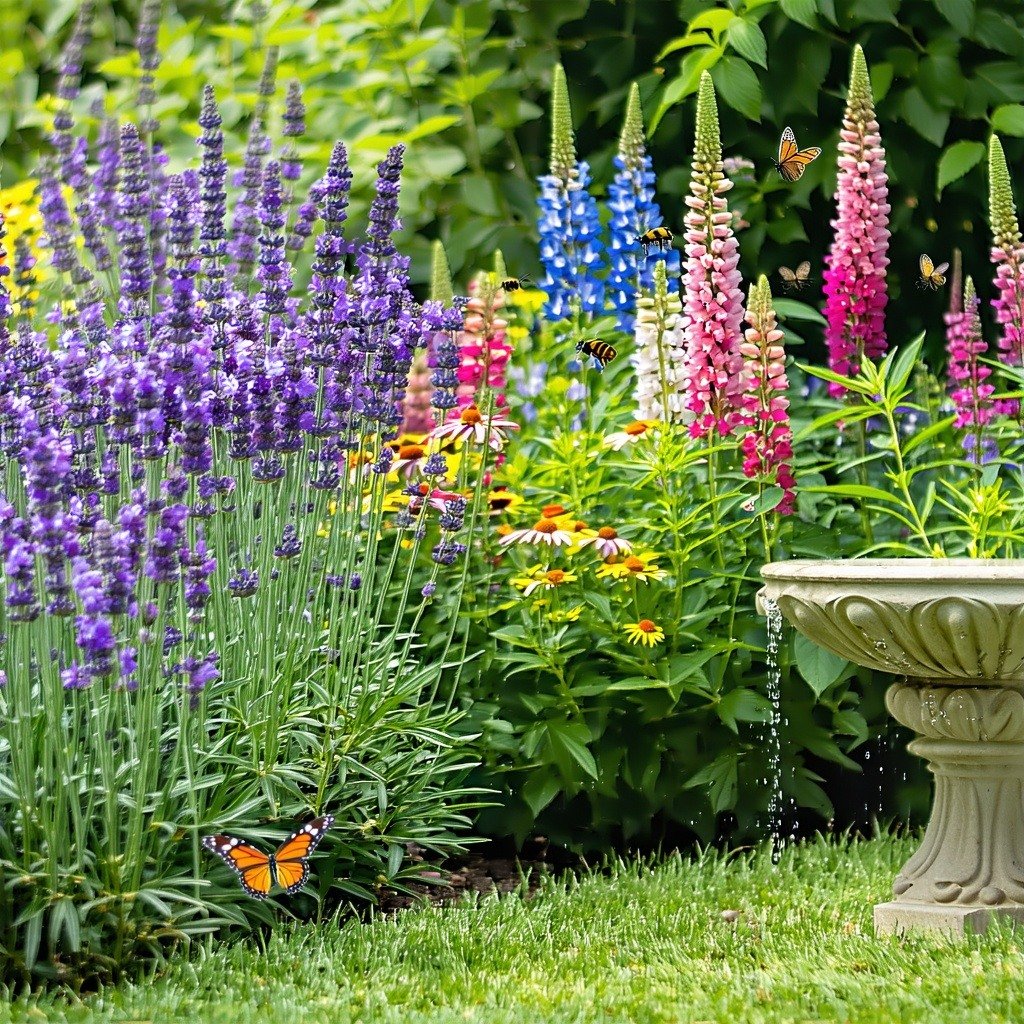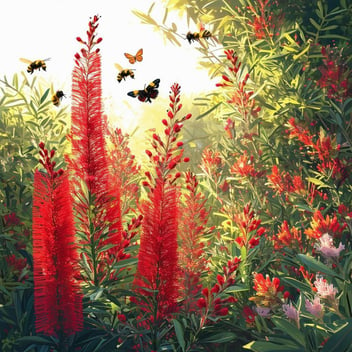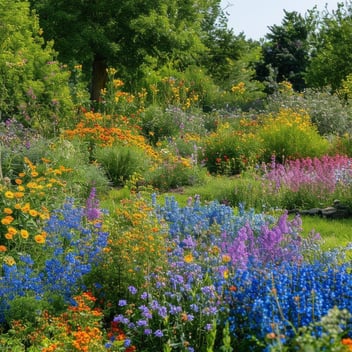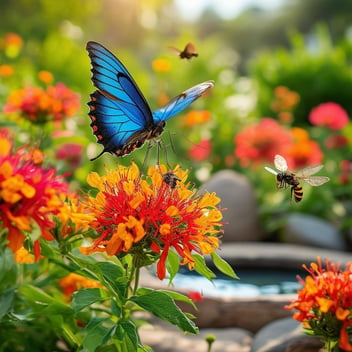Making A Pollinator Paradise: Best Perennials for Bees and Butterflies
Introduction
In the delicate tapestry of our ecosystem, pollinators such as bees and butterflies play an indispensable role. They facilitate the reproduction of flowering plants, ensuring biodiversity and the production of fruits and seeds. However, with the decline in pollinator populations due to habitat loss, pesticide use, and climate change, it's imperative for gardeners to create sanctuaries that support these vital creatures. By cultivating specific perennials, we can offer sustenance and habitat, transforming our gardens into thriving pollinator paradises.
Understanding the Importance of Pollinators
Pollinators are the unsung heroes of agriculture and wild ecosystems. Bees, butterflies, moths, and other insects transfer pollen from one flower to another, enabling plants to produce seeds and fruits. This process is crucial for the reproduction of over 75% of flowering plants and about 35% of global food crops. Without pollinators, many plants would fail to reproduce, leading to a cascade of ecological consequences and a significant reduction in food diversity.
Characteristics of Pollinator-Friendly Gardens
To cultivate a garden that beckons bees and butterflies, consider the following attributes:
-
Diverse Plant Selection: Incorporate a variety of plants that bloom at different times, ensuring a continuous food source throughout the growing season.
-
Native Species: Native plants are adapted to the local climate and soil, making them more resilient and attractive to indigenous pollinators.
-
Single Flowers: Opt for plants with single, open flowers rather than double blooms, as they provide easier access to nectar and pollen.
-
Continuous Blooming: Ensure that there are overlapping flowering periods to provide a consistent food supply from spring through fall.
Top Perennials to Attract Bees
-
Lavender (Lavandula spp.)
Lavender's fragrant purple spikes are a magnet for bees. Thriving in well-drained soil and full sun, this drought-tolerant plant offers both aesthetic appeal and ecological benefits.
-
Salvia (Salvia nemorosa)
Salvias produce vibrant flower spikes in shades of blue, purple, and pink. Their tubular flowers are particularly enticing to bees, providing ample nectar.
-
Catmint (Nepeta faassenii)
With its aromatic foliage and abundant lavender-blue flowers, catmint is a favorite among bees. It's hardy, drought-resistant, and blooms from late spring to early fall.
Top Perennials to Attract Butterflies
-
Butterfly Bush (Buddleja davidii)
As its name suggests, the butterfly bush is renowned for attracting butterflies with its elongated clusters of fragrant flowers. Blooming from summer to fall, it provides a rich nectar source.
-
Coneflower (Echinacea purpurea)
This hardy perennial boasts large, daisy-like flowers with prominent centers. Its nectar-rich blooms are a favorite among butterflies.
-
Milkweed (Asclepias tuberosa)
Milkweed is essential for monarch butterflies, serving as both a nectar source and a host plant for their larvae. Its clusters of orange or yellow flowers are both attractive and vital for the butterfly lifecycle.
Planting and Maintenance Tips
-
Site Selection: Choose locations with ample sunlight, as most pollinator-friendly plants thrive in sunny conditions.
-
Soil Preparation: Ensure well-drained soil enriched with organic matter to promote healthy root development.
-
Watering: Establish a regular watering routine, especially during dry spells, to support vigorous growth and flowering.
-
Avoid Pesticides: Refrain from using chemical pesticides, as they can harm beneficial pollinators. Consider organic or integrated pest management strategies instead.
Creating Habitat Features
Beyond planting, enhance your garden's appeal to pollinators by incorporating:
-
Water Sources: Shallow dishes with stones or birdbaths provide essential hydration.
-
Shelter: Dense shrubs, grasses, or dedicated bee hotels offer nesting sites and protection from predators.
-
Host Plants: Include plants that serve as larval food sources, such as milkweed for monarch caterpillars.
Seasonal Considerations
-
Spring: Introduce early bloomers like crocuses and hyacinths to provide initial nectar sources.
-
Summer: Ensure a vibrant display with coneflowers, bee balm, and black-eyed Susans.
-
Fall: Extend the nectar availability with asters and sedums, supporting pollinators preparing for winter.
Conclusion
By thoughtfully selecting and cultivating perennials that cater to the needs of bees and butterflies, gardeners can play a pivotal role in supporting pollinator populations. These efforts not only bolster ecological health but also result in gardens teeming with life, color, and the mesmerizing dance of these essential creatures.




